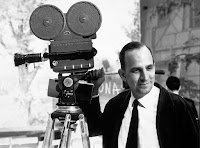Giovanni Guareschi, the Italian writer, created the character of Don Camillo, the hot-headed but lovable parish priest in a village on the Po valley. Active in parish affairs, he has to contend frequently with Peppone, the communist mayor of the village. Though ideologically at the opposite ends of the political spectrum, they are close friends & argue over their differences. The stories, set in post second world war Italy, & collected in a few volumes, though seemingly light hearted & trivial, hide spiritual truths inside.
Graham Greene also wrote about a Spanish priest, Monsignor Quixote, supposedly a descendent of the famous Don. He was plain Father Quixote, but a fortutous visit of a visiting bishop, made him a Monsignor, much against the wishes of his own bishop. His village of El Toboso (native place of the original Dulcinea) also had a communist mayor, defeated in the recent elections. The two leave the village in Quixote's battered old car, called aptly Rocinante. Their picaresque adventures form the subject of the book, ending with the protoganist's death. It was also made into a film, with Alec Guinness in the title role.
G.K.Chesterton's Father Brown again was a simple priest, but
a remarkable detective. His companion was the (retired?) master criminal, Flambeau. The priest's dumpy figure with his umbrella & clerical hat, is a memorable addition to a long line of amateur detectives like Dorothy Sayers's Lord Peter Wimsey, Agatha Christie's Miss Marple & others.
a remarkable detective. His companion was the (retired?) master criminal, Flambeau. The priest's dumpy figure with his umbrella & clerical hat, is a memorable addition to a long line of amateur detectives like Dorothy Sayers's Lord Peter Wimsey, Agatha Christie's Miss Marple & others.

















































